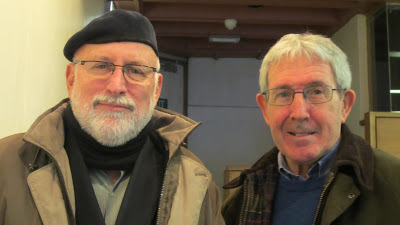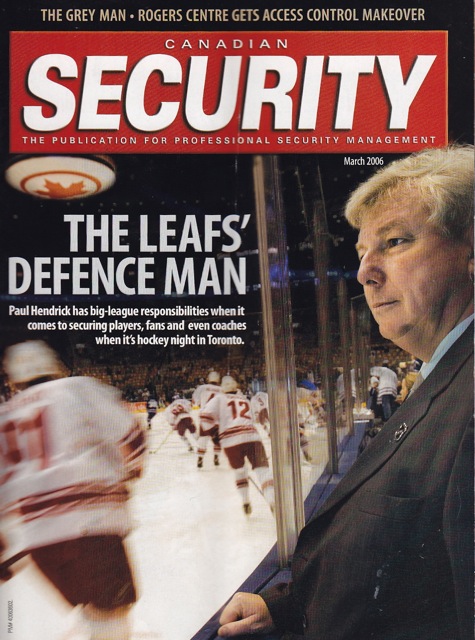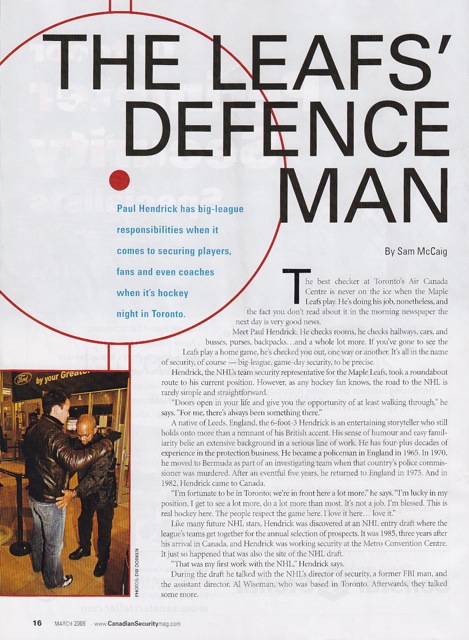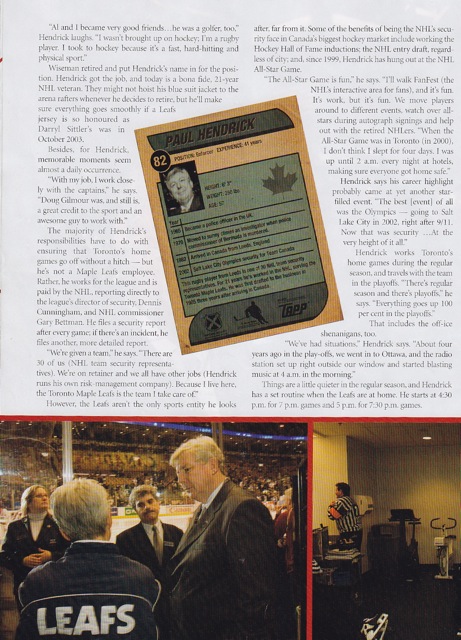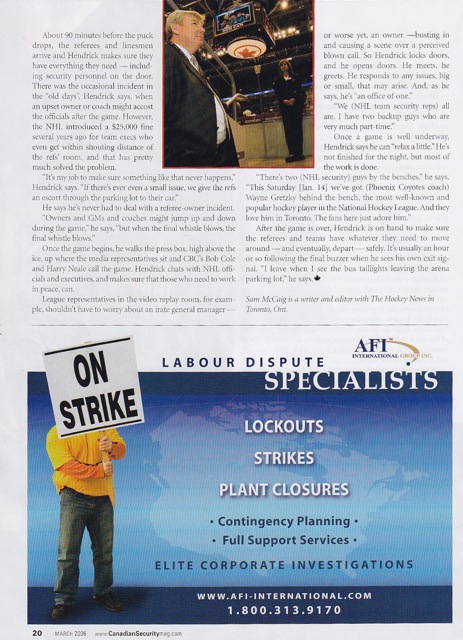The BELCO Riot - A police officers account
On the 48th anniversary of the BELCO Riot, the Royal Gazette kindly published just such an account from one of the young officers who was there. (CLICK HERE to view article in the Royal Gazette).David Mulhall served in the Bermuda Police for only a year before moving to Canada where he went on to become a university history professor. Dave was not only there that morning but he was also injured by the rioters, and it is possible the head injuries he sustained that morning could have contributed to the Parkinson’s he now sadly suffers from.
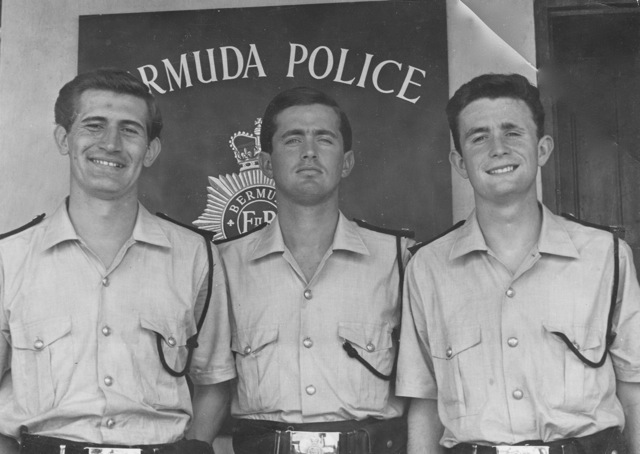
Dave is in the process of writing his memoirs for our “Then and Now” column and we look forward to publishing them as soon as they are completed – hopefully within a couple of months. In the meantime he has extracted his account of the BELCO Riot and provided it to the Royal Gazette. The article is also published below.
This account varies somewhat from those given by persons who wrote from the rioters point of views, but we will leave you to judge whether or not Dave’s version of events is the most accurate. Ironically, Dave makes it clear that he had great sympathy with the BIU’s efforts to unionize the Bermuda Electric Light Company.
Here is the article in full:-
When I left England in 1964 to train to be a police officer in Bermuda, I did not expect that within a few months I would be beaten by rioters with whose cause I openly sympathized.
And I certainly could not have imagined that this experience would influence my decision to abandon my “playing the field” approach to dating in favor of “going steady” with a young Canadian nurse I had met on a “blind date.” Her name was Frances Warner, and soon she could be regularly spotted riding side-saddle on my BSA motor-bike.
It was not until I had, by chance, observed her in action on duty that I wanted her to be the only “date” to ride pillion on my BSA. But since she worked on the Children’s Ward at King Edward Hospital, and I normally did not venture beyond the Emergency entrance, I might never have seen her at work.
February 2,1965 was not a normal day, however, for on that day I did have the opportunity to observe her in action. In the late morning she was sent down to help the Emergency staff cope with 17 policemen injured in a clash with a large, angry mob of striking workers at the Bermuda Electric Light Company (BELCO) plant on Serpentine Road.
I happened to be one of those injured policemen and I lay on a table with my head facing the door having a cut on my chin sutured when she walked in, spotted me and without a word or gesture promptly went to tend to Constable Ian Davies, who had a severe head injury from which he would never recover. Ian had been assigned to the Police Garage fixing police cars because he did not seem to be cut out for the rough and tumble of police work. He had befriended me when I arrived in Bermuda. I remember him driving me to Admiralty House in his spotless MG sports car and spending the afternoon teaching me how to sail.
At the time I thought I had been lucky to have sustained just multiple cuts and bruises. I now know that the Parkinson's disease, which ended my academic career prematurely, may be linked to the blows to my face and head.
Given Bermudians' strong, almost morbid preoccupation with race and the close correlation of race with social and class status, labor/management conflicts invariably became racial in nature. Interestingly, according to police intelligence reports, the "racialization" of the BELCO strike seems to have occurred despite the union leaders' efforts to "contain" it .The BIU's members were overwhelmingly hourly-paid blacks; BELCO's owners and most of the salaried staff were white.
Any negotiations between the two parties would inevitably be soured, on the BIU side of the table, by the persistence of such blatantly racist practices as the segregation of facilities like washrooms. Across the table, BIU's energetic and successful leadership of Bermuda's trade union and Civil Rights' movements was bound to upset and frighten the white colonial elite which essentially “owned” not only the big companies like BELCO but, despite being a minority, the government itself. The prospect of one day having to defend the interests of this powerful oligarchy made me feel uncomfortable. I admired Dr. Martin Luther King and openly sympathized with the BIU’s commitment to Bermuda’s political and social democratization.
One of the most important of those elite interests was the Bermuda Electric Light Company. By late 1964, a substantial number of its hourly-paid employees, mostly linemen, had joined the BIU, which then approached the company to request recognition and bargaining rights. BELCO agreed to negotiate, and after a number of meetings with the BIU's leaders, offered to recognize the union if at least 51% of BELCO's hourly-paid workers voted in favor of joining it.
Fearing that it would not win at the ballot box, and seriously over-estimating its ability to disrupt the company's operations, on January 14, 1965, the Union called its members out on strike. Despite the use of aggressive and clearly illegal picketing, as well as some dynamiting of company installations, the Company remained adamant in its refusal to accept the BIU's original demands.
The Union was used to winning unionization campaigns, and its leaders reacted to the humiliating prospect of failure by an escalation of tactics and the appearance of a greatly intensified rhetoric of abuse and violent threats. The police bore the brunt of this frequently openly racist vitriol.
On February 1, police intelligence officers predicted that violence would break out the following morning. For not only had the mood of the BELCO strikers become more openly belligerent, but that evening the BIU called on all its members in other industries to join it in a general, sympathy strike, and to demonstrate their solidarity by joining the BELCO picket line the next morning.
By mid-morning, the picketers outnumbered the police by an estimated 6 or 7 to 1. This overwhelming response sealed the fate of the absurdly small, unarmed, untrained, young and inexperienced group of constables, most of whom, like me, spent their days posing for tourists who had to have at least one snap of a real “Bobby.” I regarded the helmets we wore as little better than theatrical props, for they provided little protection against either the sun or assailants.
Some 45 years later BIU president Simmons told a young and deferential journalist that it was at this point that "metal pipe wielding" police "attacked" the striking pickets, who had of course to defend themselves. The metal pipes are a figment of Mr. Simmons' imagination.
The police "attack" occurred after a group of non-unionized workers asked the police to open the picket line so that they could exercise their legal right to go to work. When three policemen approached the picket line, they were set upon and severely beaten by a group of about 60 men, many of them armed with weapons from a central cache.
This deliberate, obviously planned and potentially lethal resort to armed aggression against the unarmed and vastly outnumbered police is probably best understood as a result of turning the solid, unbroken picket line into a symbol of union and, perhaps, racial solidarity. It would follow that any attempt to "break" it would be felt as a humiliating provocation that warranted a violent, punitive reaction.
As more weapons were passed along the picket lines, so assaults on police officers, usually those traveling in small groups, became more frequent. Still the riot control units held on reserve at Prospect and the Hamilton Police Station were not called in. Instead, seven unarmed and unprotected men were sent in a police van to seize the weapons and to arrest those who were distributing them.
Predictably, these men were attacked and badly beaten. From about a hundred yards away I saw Ian Davies, one of the seven, being beaten by several men as he lay unconscious and bleeding profusely from a head wound. I ran to help, though I do not know how. Then, as I approached one of the assailants from behind, he raised a golf club above his head. Acting before thinking, I wrenched the putting iron from his hands before he could bring it down on Ian’s head again.
I then experienced an intense wave of irrational self-satisfaction and relief as I threw it over a nearby wall. Perhaps foolishly, it never occurred to me to use it, or the toy-like police issue baton to defend myself against the four or five assailants I had not disarmed. Quite possibly, the enraged rioters would have turned on me with more murderous intent had I used my captured golf iron on them.
Angered at having their beating of an unconscious man interrupted, they left Ian and turned on me with their motley array of improvised weapons: iron reinforcing rods, lengths of 2 by 4 wood, baseball bats, and my tiny baton, which one of them yanked out of its concealed pocket while I was in my defensive tortoise mode.
Because I had taken some advanced first aid/medic courses in the U.K., I attended to Ian while Constable George Linnen put himself between Ian and the rioters who were hurling rocks and bottles from across the street.
I think I very briefly lost consciousness when I hit the roadway "chin first." At that point, surrendering to instinct, I curled up in a ball and wrapped my arms and hands around my head.
Fortunately, the long-delayed arrival of police reinforcements scared off my attackers. A quick look at Ian's injuries convinced me that his skull was fractured and that he was losing a good deal of blood from scalp lacerations Putting into practice what I had learned from a simulated "scenario" involving very similar injuries, I shouted for officers to give me their standard winter uniform ties, which I made into a donut-shaped compress designed to apply light pressure to his hemorrhaging scalp. There was nothing more I could or should have done to treat his fractured skull.
An ambulance sent for the police casualties was blocked for some time by the mob. Shortly afterwards, but too late help the injured seventeen, the riot units quickly, and with minimal discomfort for the rioters, cleared the street. The BELCO Riot was over.
A BRIEF CRITICAL ANALYSIS
The only extant written description of the police role in this "Disturbance" is a report prepared at the behest of Commissioner George Robins by Inspector J. C. P. Hanlon, a sort of in-house P.R. man. A copy of the report was sent the Colonial Secretary in London. Clearly intended to divert attention away from the apportioning of blame, it does so by ignoring the whole question of personal responsibility and avoiding any critical analysis. Things just happened.
The reader is told, for example, that small groups of policemen, unarmed, untrained, and unprotected by proper riot clothing and gear, were ordered to disarm an enraged mob of about 300, but there is no mention of who gave that absurd order - and why. Similarly, the failure to provide any kind of crowd or riot control training at the Training School is simply not raised. Nor is the decision to deploy the two riot control units only after 17 men were injured.
No wonder Commissioner Robins thanked Hanlon "very much for this excellent report...." For the first two weeks of the strike Commissioner Robins' pursued a policy of appeasement - what might be called "reckless restraint." Designed, presumably, to avoid confrontations which might get out of hand, and thereby tarnish Bermuda's image, it had the opposite effect, as, for example, when illegal picketing became more aggressive once it became obvious that the law would not be enforced. Hanlon does concede that "to a certain extent" the decision to ignore this flouting of the law did contribute to further lawlessness.
By mid-morning on February 2, aware that his men had lost control, Robins apparently abandoned appeasement in favor of vigorous and prompt restoration of the rule of law. This meant breaking the picket line and disarming the rioters using the manpower and little truncheons originally mustered to implement the appeasement policy. Why Robins did not order a tactical disengagement until the riot control units arrived remains a mystery.
1. CLICK HERE to read David Mulhall's lifestorywhich he later completed for our Then and Now"column
2. For the record, eight of the police officers who were present that morning were later recognized for their bravery with the following awards:-
Inspector Robert Ball
Sergeant John Cafferkey
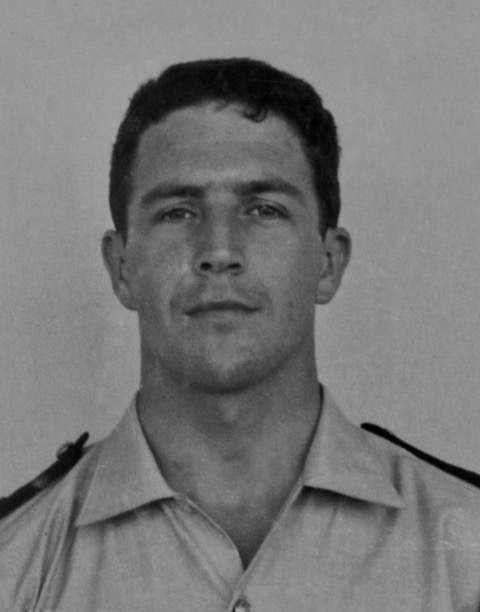 Young Constable John McQuaid
Young Constable John McQuaid